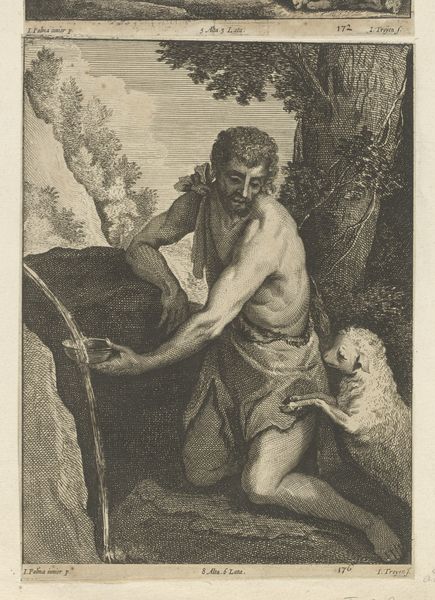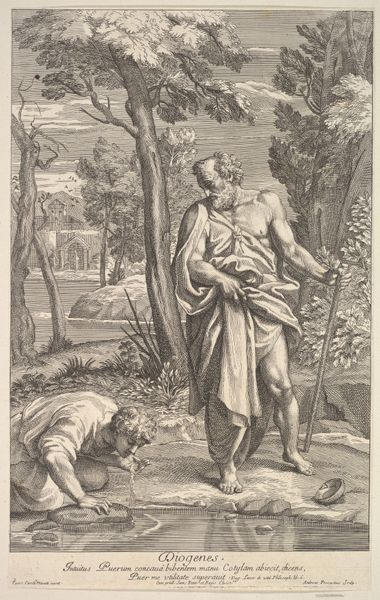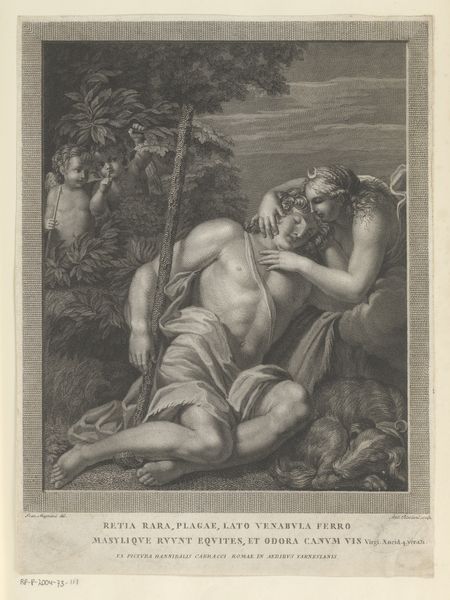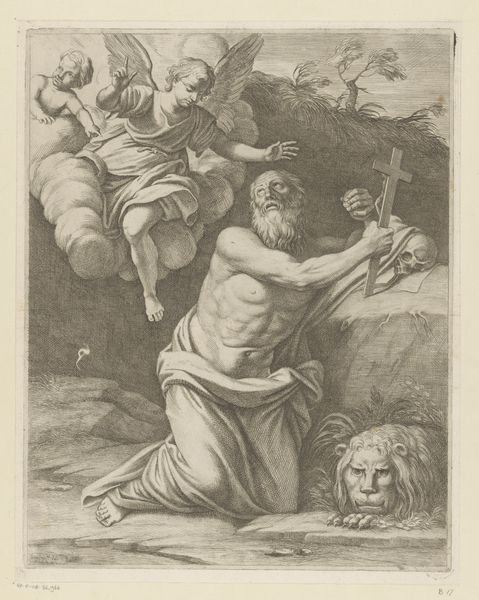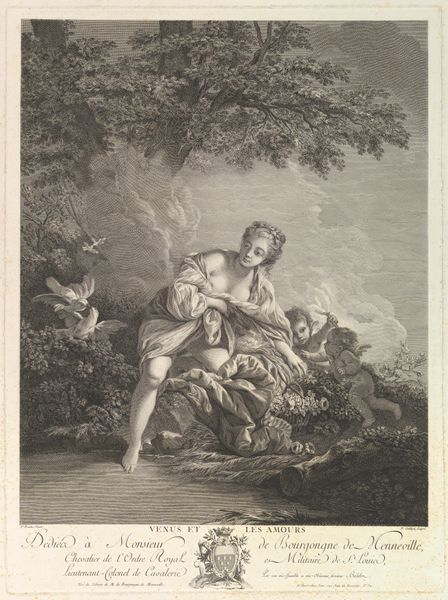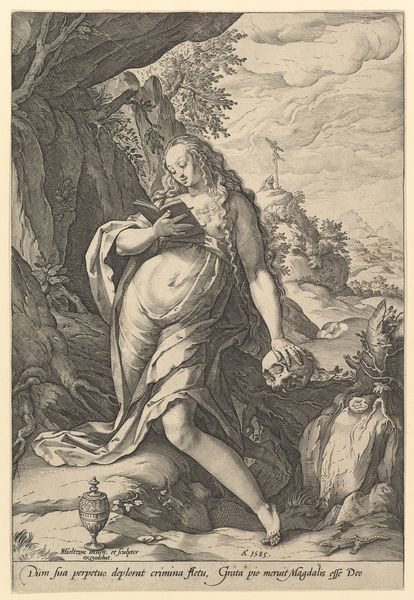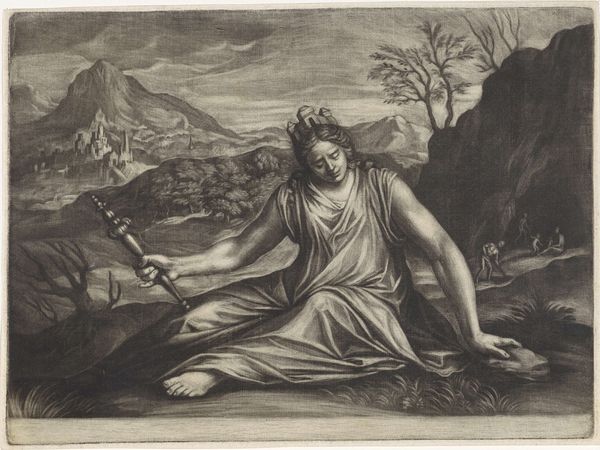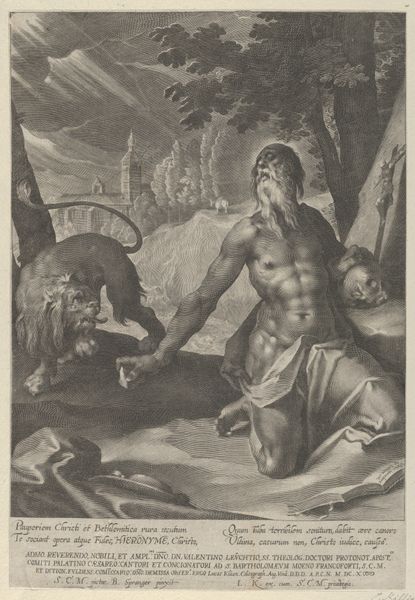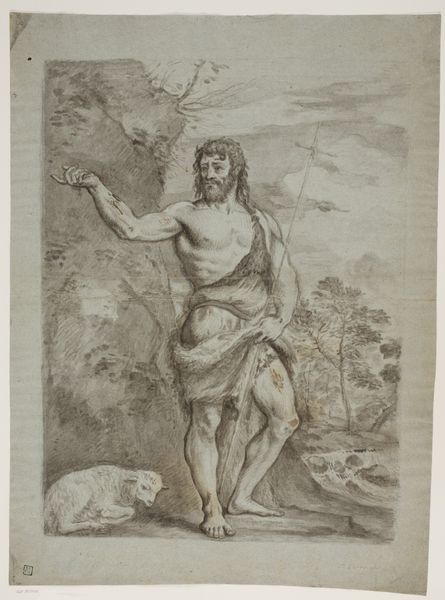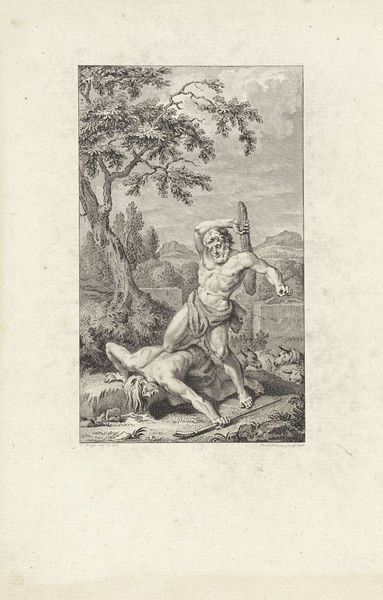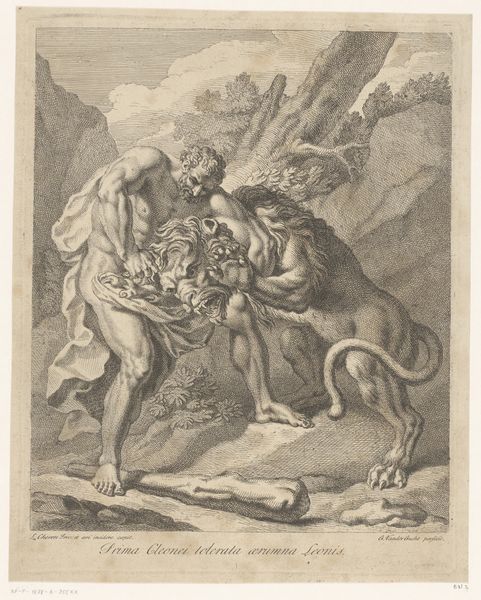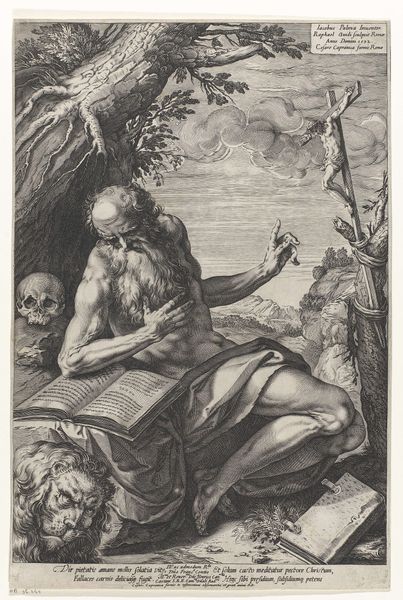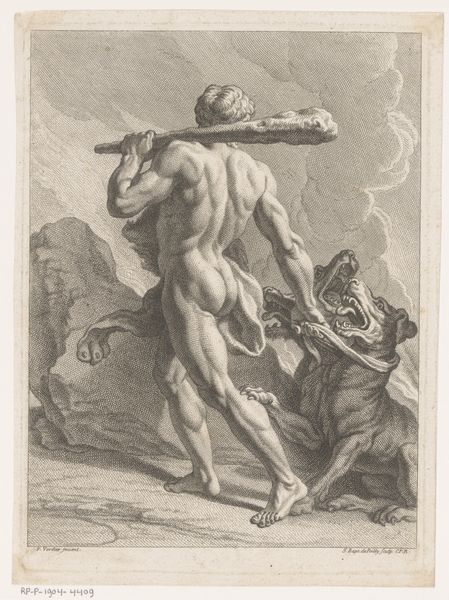
Saint Jerome seated by a tree looking up at a crucifix, a lion drinking water from a stream to his right 1728
0:00
0:00
drawing, print, engraving
#
drawing
#
baroque
# print
#
old engraving style
#
landscape
#
figuration
#
form
#
line
#
history-painting
#
engraving
#
realism
Dimensions: Sheet: 21 in. × 15 1/4 in. (53.3 × 38.8 cm) Plate: 15 3/8 × 11 in. (39.1 × 28 cm)
Copyright: Public Domain
Editor: So, this is "Saint Jerome seated by a tree looking up at a crucifix, a lion drinking water from a stream to his right," a 1728 engraving by Nicolas Chasteau. It feels very theatrical to me, almost staged. What do you see in this piece beyond the obvious religious iconography? Curator: I see a carefully constructed narrative rooted in power dynamics. Note the almost performative humility of Saint Jerome contrasted against the subtle suggestion of dominance over nature, exemplified by the lion. This isn’t simply a pious scene; it's a demonstration of ideological control. Consider how this image, produced during a period of intense social stratification, might reinforce notions of divinely ordained hierarchies. How might the depiction of Saint Jerome’s piety play into the justification of societal inequalities? Editor: I see what you mean. It's not just a peaceful hermit in nature. It's about the *assertion* of spiritual authority. So the landscape isn't just a backdrop. Curator: Precisely! The seemingly serene setting is a space where dominance is being negotiated. What impact did these engravings have in colonial contexts, or as tools used by missionaries, in naturalizing the project of imperialism? Did these images normalize exploitation and colonial ambition, even in the garb of spiritual enlightenment? Editor: Wow, I hadn't considered that angle at all. So, beyond the immediate religious subject matter, it reveals the social and political currents of the time, in sometimes unsettling ways. Curator: Indeed. And by recognizing this, we gain a richer understanding of art's complex relationship to power. These engravings weren't innocent reflections; they were active participants in shaping a specific worldview.
Comments
No comments
Be the first to comment and join the conversation on the ultimate creative platform.
